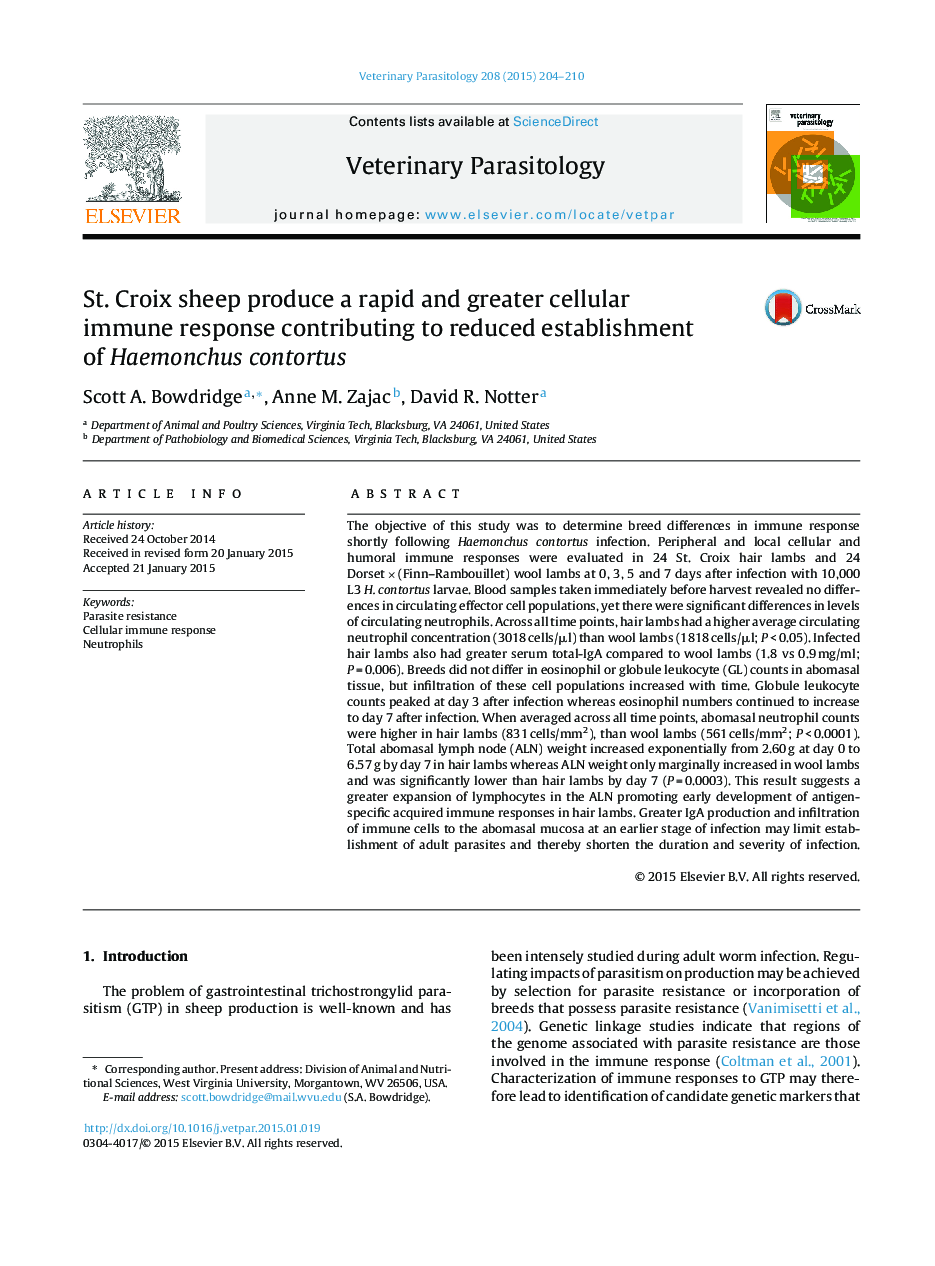| Article ID | Journal | Published Year | Pages | File Type |
|---|---|---|---|---|
| 5802524 | Veterinary Parasitology | 2015 | 7 Pages |
â¢Parasite-resistant sheep had greater local lymph node hypertrophy.â¢Parasite-resistant sheep generated more circulating white blood cells.â¢Parasite-resistant sheep had more neutrophil accumulation at the site of infection.â¢Parasite-resistant sheep had a lower larval burden.â¢Early cellular immune responses are associated with reduced larval burden.
The objective of this study was to determine breed differences in immune response shortly following Haemonchus contortus infection. Peripheral and local cellular and humoral immune responses were evaluated in 24 St. Croix hair lambs and 24 Dorset Ã (Finn-Rambouillet) wool lambs at 0, 3, 5 and 7 days after infection with 10,000 L3 H. contortus larvae. Blood samples taken immediately before harvest revealed no differences in circulating effector cell populations, yet there were significant differences in levels of circulating neutrophils. Across all time points, hair lambs had a higher average circulating neutrophil concentration (3018 cells/μl) than wool lambs (1818 cells/μl; P < 0.05). Infected hair lambs also had greater serum total-IgA compared to wool lambs (1.8 vs 0.9 mg/ml; P = 0.006). Breeds did not differ in eosinophil or globule leukocyte (GL) counts in abomasal tissue, but infiltration of these cell populations increased with time. Globule leukocyte counts peaked at day 3 after infection whereas eosinophil numbers continued to increase to day 7 after infection. When averaged across all time points, abomasal neutrophil counts were higher in hair lambs (831 cells/mm2), than wool lambs (561 cells/mm2; P < 0.0001). Total abomasal lymph node (ALN) weight increased exponentially from 2.60 g at day 0 to 6.57 g by day 7 in hair lambs whereas ALN weight only marginally increased in wool lambs and was significantly lower than hair lambs by day 7 (P = 0.0003). This result suggests a greater expansion of lymphocytes in the ALN promoting early development of antigen-specific acquired immune responses in hair lambs. Greater IgA production and infiltration of immune cells to the abomasal mucosa at an earlier stage of infection may limit establishment of adult parasites and thereby shorten the duration and severity of infection.
